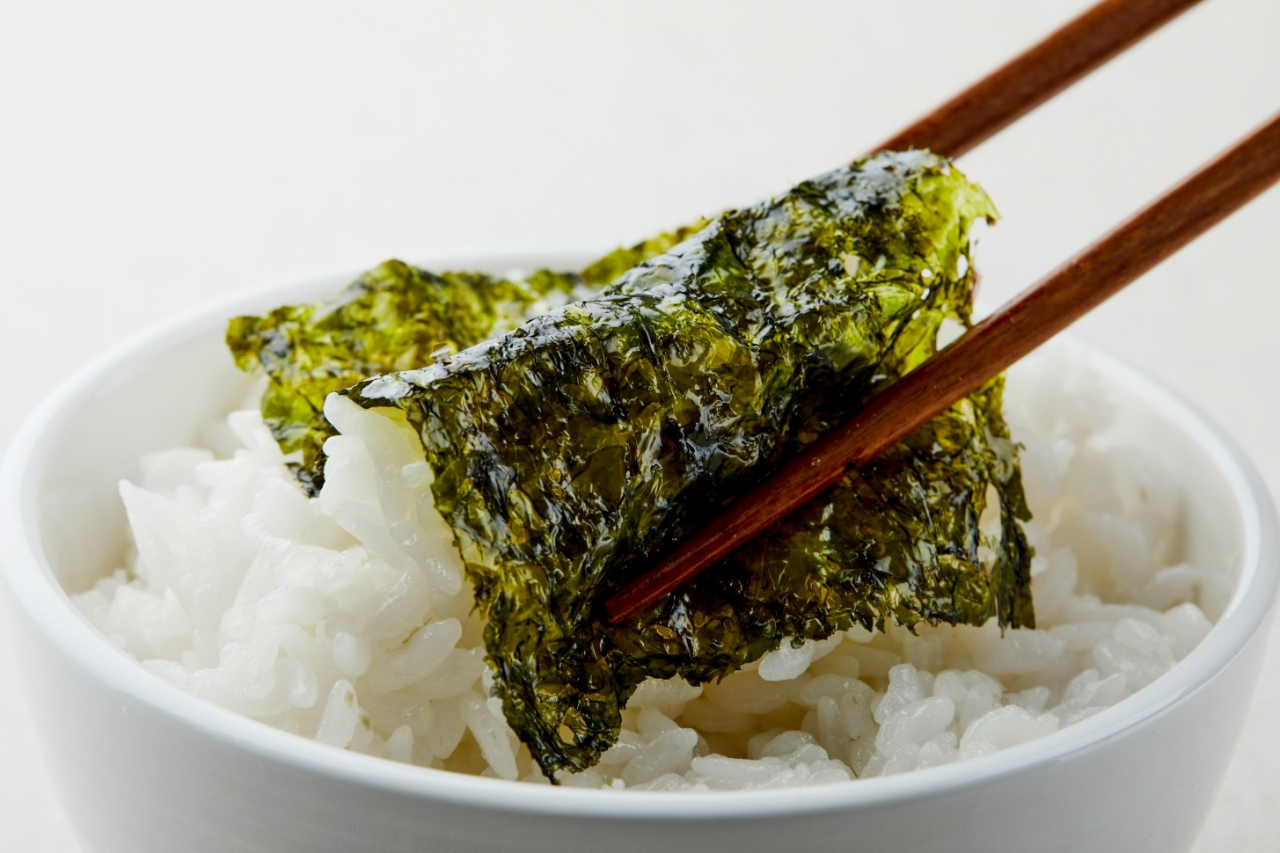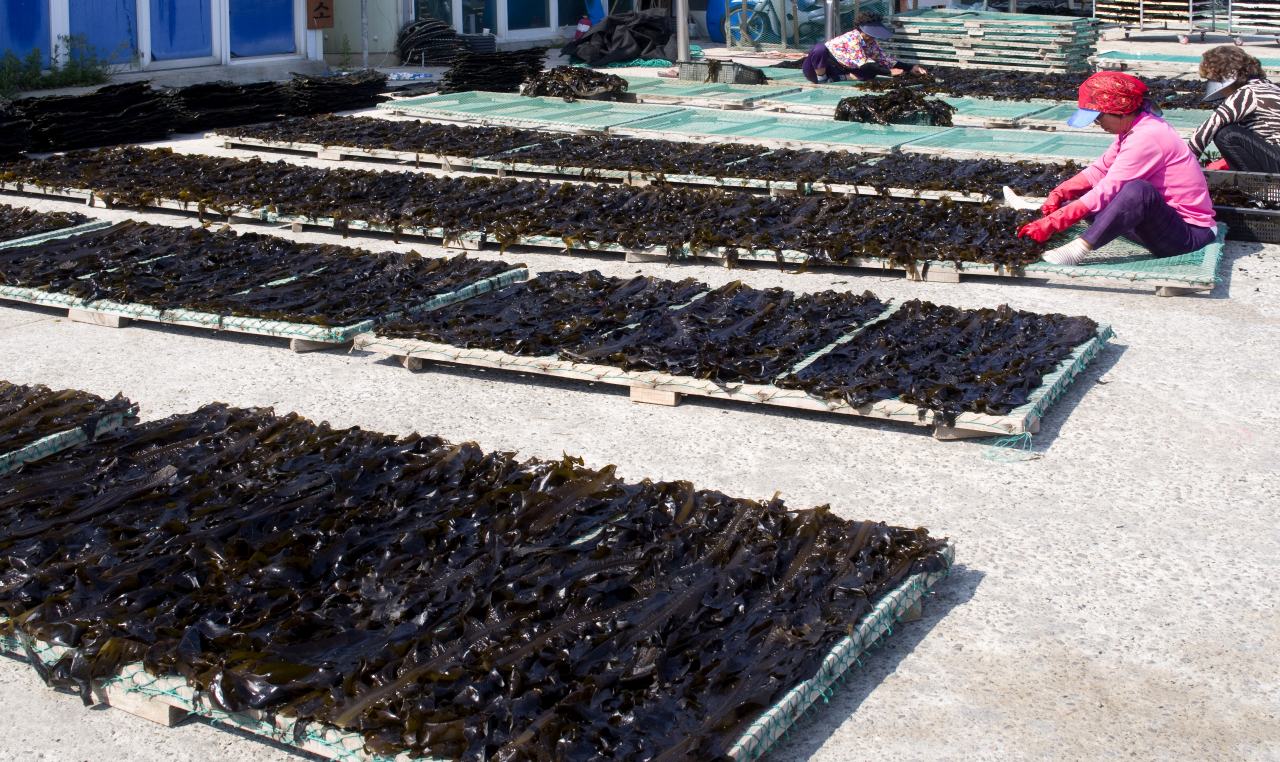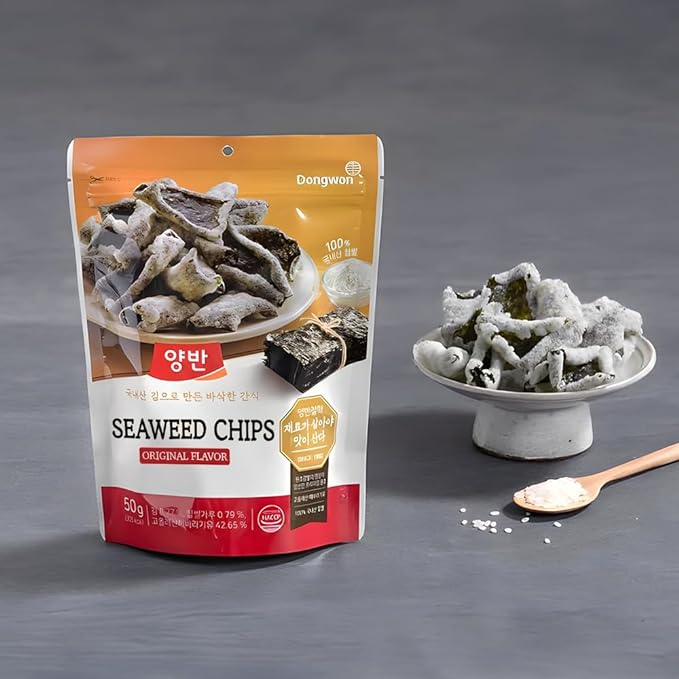‘Gimflation’ in S. Korea as dried seaweed prices grow on rising global demand
Everyone's favorite from toddlers to drinkers, Korea faces challenge keeping dried seaweed affordable
By No Kyung-minPublished : May 23, 2024 - 14:21

Dried seaweed or gim, a staple dish nicknamed "rice thief" for its perfect pairing with rice, is seeing considerable popularity globally these days.
In recent years, gim's deliciousness, coupled with its nutrient content and recognition as a food source beneficial to ocean ecosystems, has captivated taste buds worldwide, making its way into an unexpected array of dishes, served in salads, broths, casseroles, pizza and even occasionally sprinkled on ice cream.
Yet, despite the gim industry seeing a heyday here, ordinary people in Korea fear that the country’s humble, yet always satisfying trio on a table -- a bowl of white rice, kimchi and seasoned dried seaweed -- may one day no longer be considered a modest meal.
In May, the average retail price of gim, in its most basic form roasted with no seasoning, is up over 80 percent from a year ago.

K-gim wave
Yoo Min-hyun, a graduate student in his 20s from Illinois, can attest to a notable increase in people’s interest in gim in the US, compared to when he first came to the states years ago.
"I've noticed many Korean seaweed products, especially packaged dried seaweed, being sold at local supermarket chains, not just at Asian markets," he said. "More and more of my friends, both American and Asian, are incorporating gim into their dining setups, particularly with Asian cuisine."
Last year, the US witnessed Trader Joe's novel frozen gimbap (seaweed rice rolls) sell out after going viral on TikTok and Instagram. The product especially attracted consumers who prefer inexpensive vegan options without meat fillings.
On top of this, there has been a growing global interest in seaweed as a nutritious food source that benefits ocean ecosystems, positioning it as more than just a popular Korean food.
According to the World Wildlife Fund for Nature, an international conservation organization, its cultivation requires no fertilizer, pesticides, fresh water or land, while yielding positive impacts on “ocean health, climate mitigation and food security.”
All this translates into a boom for Korean manufacturers of gim products.
South Korea commands over 70 percent of the global dried seaweed market, valued at $918 million as of 2022, as per Yonhap News Agency.
According to the Ministry of Oceans and Fisheries, Korea's exports of gim, seasoned and dried seaweed combined, surged past 1 trillion won ($790 million) in total value for the first time in 2023, with the largest shipments going to the US, Japan, China, Thailand and Russia in that order.
And gim’s strong upward momentum is continuing this year, with export figures from the first two months of this year showing a 28.1 percent increase compared to the same period last year.
As of May, the top-selling seaweed snacks on US e-commerce giant Amazon are Korean-style roasted seaweed products from the US-based brand Gimme.
Products from Korean manufacturers such as CJ Cheiljedang, Samjin Globalnet and Daechungim also made the bestseller list, offered in a wide array of flavors beyond the staple sea-salt, including kimchi, bulgogi, teriyaki and green tea.

'Like gold'
The skyrocketing prices of gim reached a point where South Koreans are now drawing comparisons to the ever-increasing price of gold.
Kim Jin-ae, a 40-something Seoul resident, expressed concern over the rising prices of gim at a local supermarket. “It feels like its price continues to rise literally each day,” she remarked. “I am thinking about stockpiling gim products before it’s too late, just like people are investing in gold bars these days.”
Indeed, since last year, gim is witnessing a sharp uptick in retail prices resulting from heightened global demand, diminished local stock levels and continued shortfalls in seaweed output from neighboring seaweed harvesters Japan and China due to ocean warming and marine desertification.
A 100-sheet package of dried, unseasoned gim, widely used as a benchmark for retail gim prices, now averages 10,089 won ($7.43), according to a May report by the Korea Maritime Institute, marking an on-year increase of over 80 percent. Surpassing the 10,000 won mark for the first time in April, its wholesale price is projected to rise to 10,875 won.
The soaring price of gim is especially concerning for Koreans, given its diverse usages in Korean cuisine.
Its inevitable usage in gimbap, for instance, has contributed to the price increase of gimbap, the No. 1 meal-on-the-go for people in Korea, rising by 7.7 percent to 3,323 won, a 15.6 percent increase compared to two years ago, as per the Korea Consumer Agency in May.
Earlier this month, the Korean government lifted tariffs on imports of both dried and seasoned seaweed to stabilize local gim prices, effective until Sept. 30, after which the seaweed harvesting season begins.
Local industry insiders say that despite holding the dominant position in the global dried seaweed market, Korea faces some grave challenges, such as the continuing rise in water temperatures necessitating the need to develop high-temperature-resistant varieties, as well as the aging of seaweed farmers.
According to data from the National Federation of Fisheries Cooperatives in 2022, those aged over 70 constitute over 40 percent of the population of fishing villages nationwide.
In an effort to enhance productivity, officials from the National Institute of Fisheries Science said research is underway for algae variants that can grow in seasons when they normally do not, such as in June.
Taking it a step further, on May 14, Korean food giant Pulmuone introduced a noodle dish at its corporate-run restaurant in Seoul, using seaweed harvested with algae bioreactor systems for the first time. This land-based farming technology enables the cultivation of seaweed throughout all seasons in a controlled sea-like environment.




















![[Today’s K-pop] Treasure to publish magazine for debut anniversary](http://res.heraldm.com/phpwas/restmb_idxmake.php?idx=642&simg=/content/image/2024/07/26/20240726050551_0.jpg&u=)